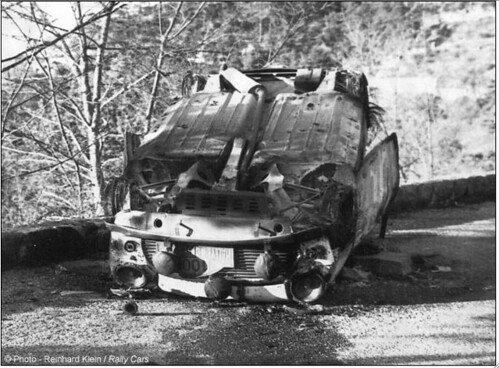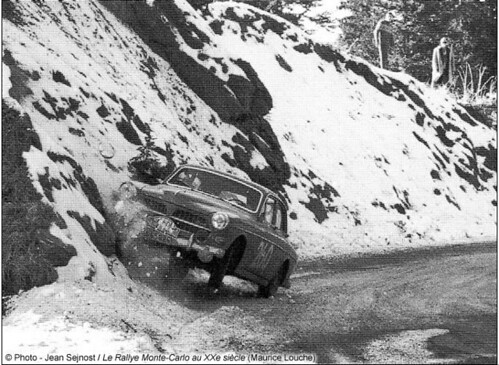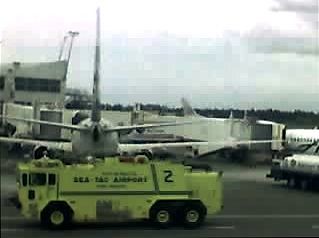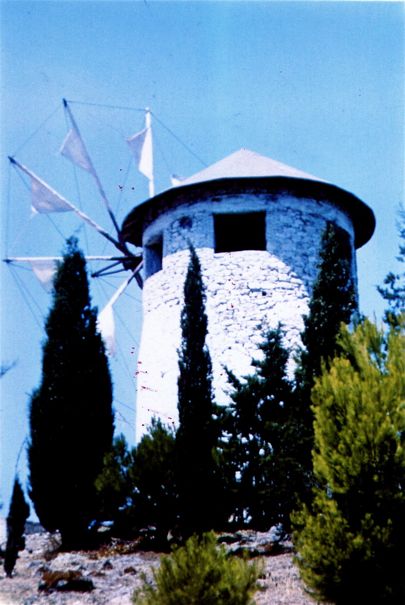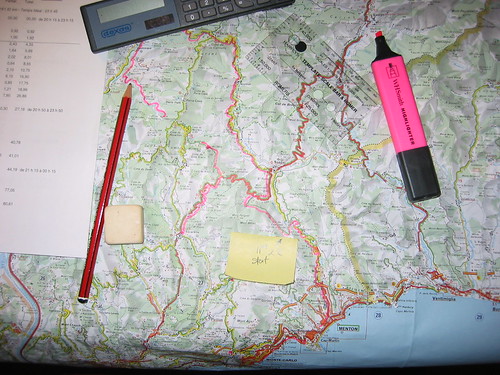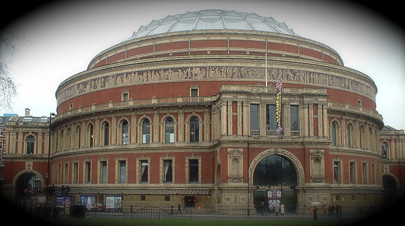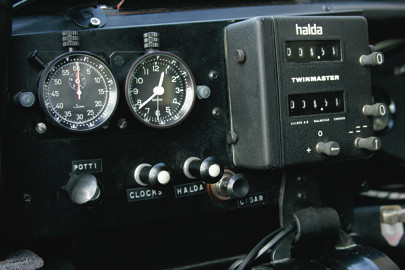 Mad Dog's on-the-road "office"
Mad Dog's on-the-road "office"Various friends, colleagues and
some bloggers have asked me what rallying is all about. The realisation that I'm regarded as an authority in some quarters is quite funny but I suppose I have learned a bit since my first, laughably useless, first attempt on one of the first days of the New Millennium. So here's a quick guide for the perplexed.
The overall objective of historic or classic rallying is to drive a specified route and collect the fewest penalty points. A few things are assumed (i) that a car must have a crew of at least two individuals and (ii) an age-appropriate vehicle must be used. Different organisations and different events will have varying rules which is quite confusing, especially when they dictate the modifications that can be made to the car or the equipment carried. Roughly speaking, the car needs to have only period modifications although some concessions are allowed for safety (modern seats, seatbelts, roll cages etc).
So as I was saying, the crew needs to drive from the start to finish along a pre-defined route in a timely manner. To ensure this happens, the rally organisers will set up check points to ensure that the competitors are not cheating and taking shortcuts. The crews must get to certain time controls on the exact minute as written in the instructions. This is usually not too difficult, especially if the section is longish -the organisers usually build in sufficient time to allow the crews to stop for fuel, take "bio-breaks" get coffee or do minor servicing and repairs. So the general idea is to get to a spot before the checkpoint (often conveniently located in a café) early and then check exactly on the prescribed minute (a task for the co-driver). An important point to make is that historic rallies are conducted at street legal speeds and are not races (usually). It's actually bad form to call the event "a race" as it gets the sport a bad name. The point is not to reenact the Gumball Rally. The American term "rally racing" is also misleading. It's fine for
WRC kind of thing where the fastest through the stage wins but it's not what historic events are about.
OK, I hope that's clear so far. But I've only covered the easy part known as "transit sections". Up until now all that's needed is a competent driver and co-driver, the ability to drive to a route and organise the car to be at certain places on time. Surprisingly a lot of people get tripped up on the transit sections and if the rally planners scatter a few navigational booby traps in the mix a lot of crews can get caught out. But now the fun rally begins. The point of the transit sections is to convey the crews to the really nasty bits which are known as "Regularity Zones". Americans call this next bit
Time, Speed, Distance which is a good description. At the starting checkpoint the crew will be assigned a speed. They then have to drive the route precisely at this average speed, usually between 42-49 KPH. The regularity stages vary in length from 10-40 kilometers. The degree of precision is variable from event to event but this year the
Automobile Club de Monaco is doing the timing to 1/100th of a second! So how is this accuracy accomplished? Well the co-driver needs three items (i) a good stopwatch, (ii) an accurate mechanical tripmeter of the type used in the 60s and 70s -the Mini is fitted with a
Halda Twinmaster; these devices were originally made for Swedish taxis and are accurate down to 10 metres and (iii) a large book of
speedtables. Lots of excellent geekery is involved. As soon as the car is flagged off, the previously zeroed stopwatch and tripmeter are started and the co-driver starts checking the average speed in the book by cross reading elapsed time on the stopwatch vs. distance covered on the tripmeter. I try to do this four times per minute and call out whether we are fast or slow. If the car is bouncing over a bad road it's quite common to be able to achieve only two or three sampling times per minute. Oh, and the co-driver has also got to keep the driver on the correct route so some map work is necessary too. And before anybody asks, modern electronic tripmeters are illegal as are GPS devices and other such gizmos. Some rallies outlaw the use of mobile phones (one or two competitors phone back road conditions and positions of hidden intermediate timing points -usually a couple of marshals sequestered in a van- to their team mates) but it's virtually impossible to police their use. The ACM doesn't even try.
So just in case anybody is thinking that maintaining an average speed of less than 30mph is easy, let me point out that the stages are invariably narrow mountain roads frequently covered with snow and ice. Freezing fog is quite common too. To do well everything needs to be just right. The crew must have a harmonious relationship with each knowing their precise job, the car needs to be set up correctly and in the case of the Monte Carlo, appropriate tyres need to be fitted and the service crew needs to be at a spot where wheels can be juggled. If any of these variables are wrong, the crew will find the going difficult. Often it's so difficult to make the target time (usually set in optimum weather conditions) that the drive is a flat out blast until the end of the stage.
And that's about it. If you can maintain your concentration for four days, manage to drive all the transit sections on time, score a minimum of penalties on the regularity stages (the Monte Carlo has 14 this year) not crash or breakdown, avoid traffic jams due to bad weather, idiotic spectators or bakers giving away apple strudel* and not come to blows with your crew members**, you'll have a good chance of finishing in the points. In any case you'll have a lot of good stories by the end of the event and the Automobile Club de Monaco holds the best party ever.
P.S. Following a comment from the ever astute
Little Cricket, I realised I omitted an important fact about the regularity stages. I should have mentioned how the average speed is monitored. Each car carries a transponder which registers when we start and finish the stage. There are also hidden intermediate timing points to stop cars accruing time on the easier sections and giving themselves a reserve for the harder parts of the stage. I should also out that this year, in an attempt to control the boy racer element in the rally (sadly there is one) the penalty points for being ahead of the target time are six times those for being slow.
* This happened to us in 2005. A baker in the village of Antraigues is famous for passing out delicious apple strudel to the rally crews. Note to the ACM and the local Gendamarie: it's a lovely gesture but please don't let it impede competeing cars. After losing 15 minutes due to crowd control, I wanted to stick the said strudel up somebody's ar was very stressed.
** Rally lore has several accounts of married couples getting so angry with each other en route that they've abandonded their car, flown home separately and filed for divorce!

